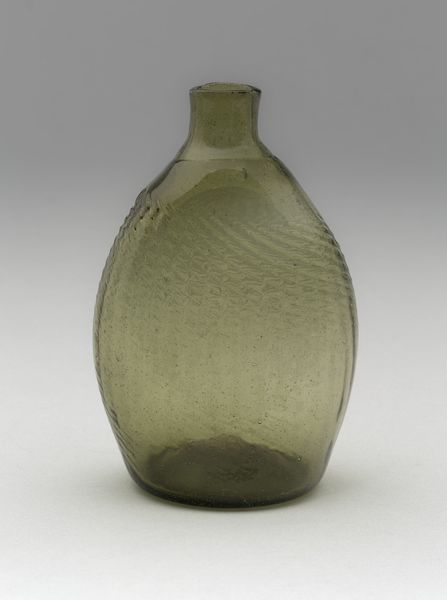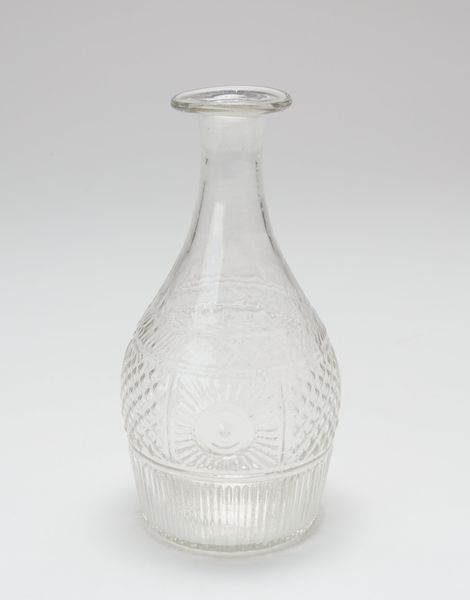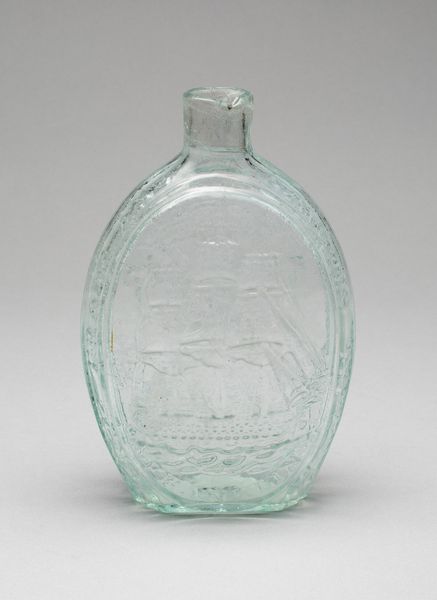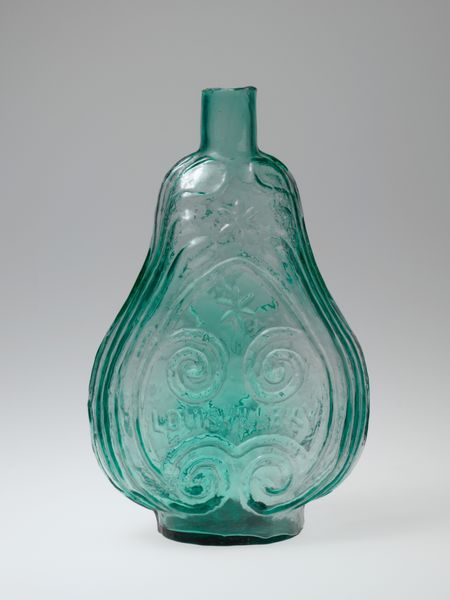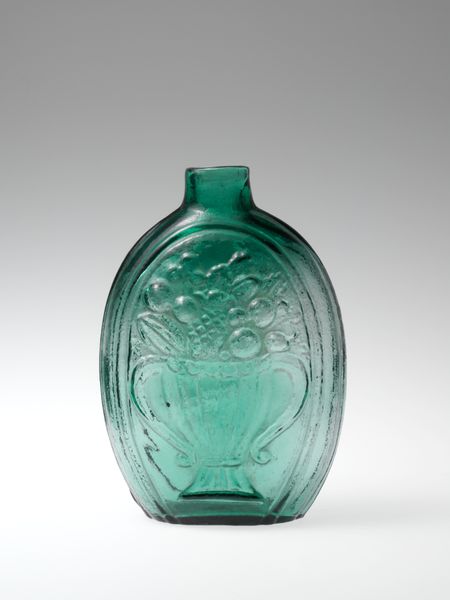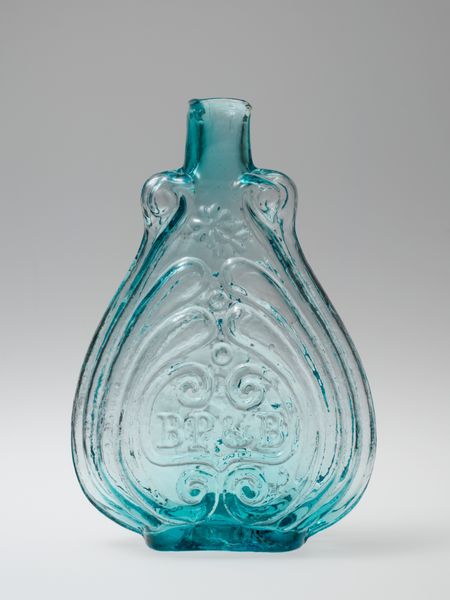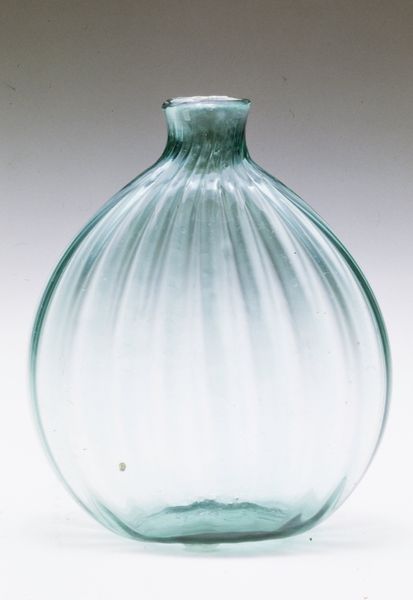
glass
#
studio photography
#
glass
#
decorative-art
Dimensions: 13.7 × 10.2 × 5.1 cm (5 3/16 × 4 × 2 in.)
Copyright: Public Domain
Editor: Here we have an exquisite glass bottle or flask, dating back to around 1890. It's currently held at The Art Institute of Chicago. It's the shape of a scallop shell, and something about it just seems so delicate, yet enduring. What draws your eye when you look at this object? Curator: The seashell form immediately pulls me in. Seashells are laden with meaning, often representing birth, regeneration, and pilgrimage. Think of Botticelli’s "Birth of Venus" – the shell is a symbol of divine feminine power, rebirth, and sensuality. How might that translate onto something as functional as a flask? Editor: Well, if it’s from the 1890s, maybe it speaks to the Art Nouveau movement? Celebrating natural forms and elegance... Were people aspiring to imbue everyday objects with deeper meaning? Curator: Precisely! It suggests a desire to elevate the mundane. This isn't just a vessel; it's a statement. What substance do you think it might have held? A precious perfume? Perhaps a restorative cordial? And for whom? Editor: Something precious and special, definitely. Maybe for someone wanting to carry a reminder of beauty or luxury with them. Perhaps this seemingly simple bottle links back to classical ideals of beauty and mythological associations with the sea. I hadn't considered how loaded a simple form could be! Curator: Absolutely. It reminds us that even everyday objects can hold complex cultural meaning, consciously or unconsciously shaping how we experience the world. A shell isn't just a shell when shaped into something new. Editor: That’s really fascinating, thinking about the layers of symbolism infused into a seemingly simple object. Curator: Indeed, art invites us to look deeper into the commonplace and find extraordinary echoes within.
Comments
No comments
Be the first to comment and join the conversation on the ultimate creative platform.


